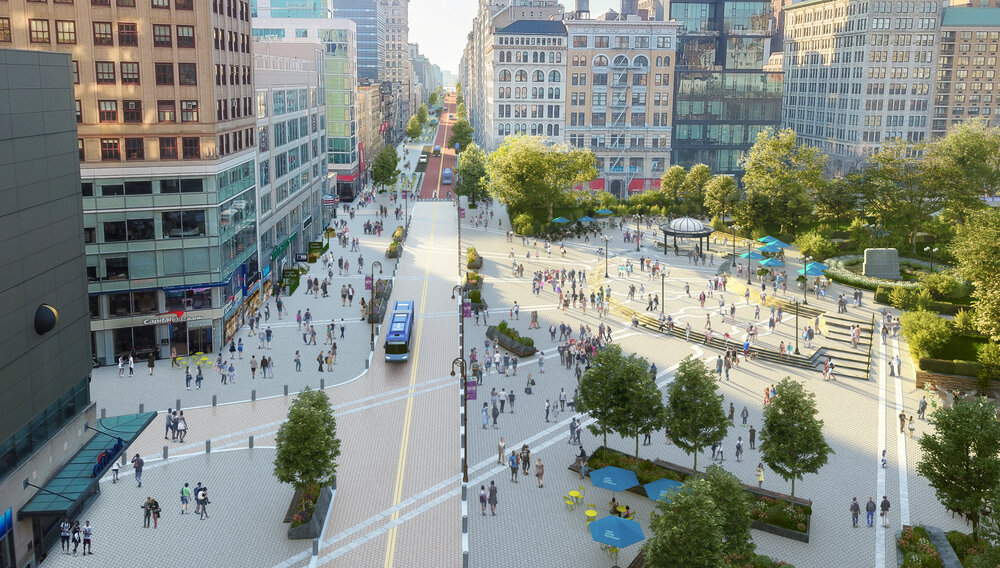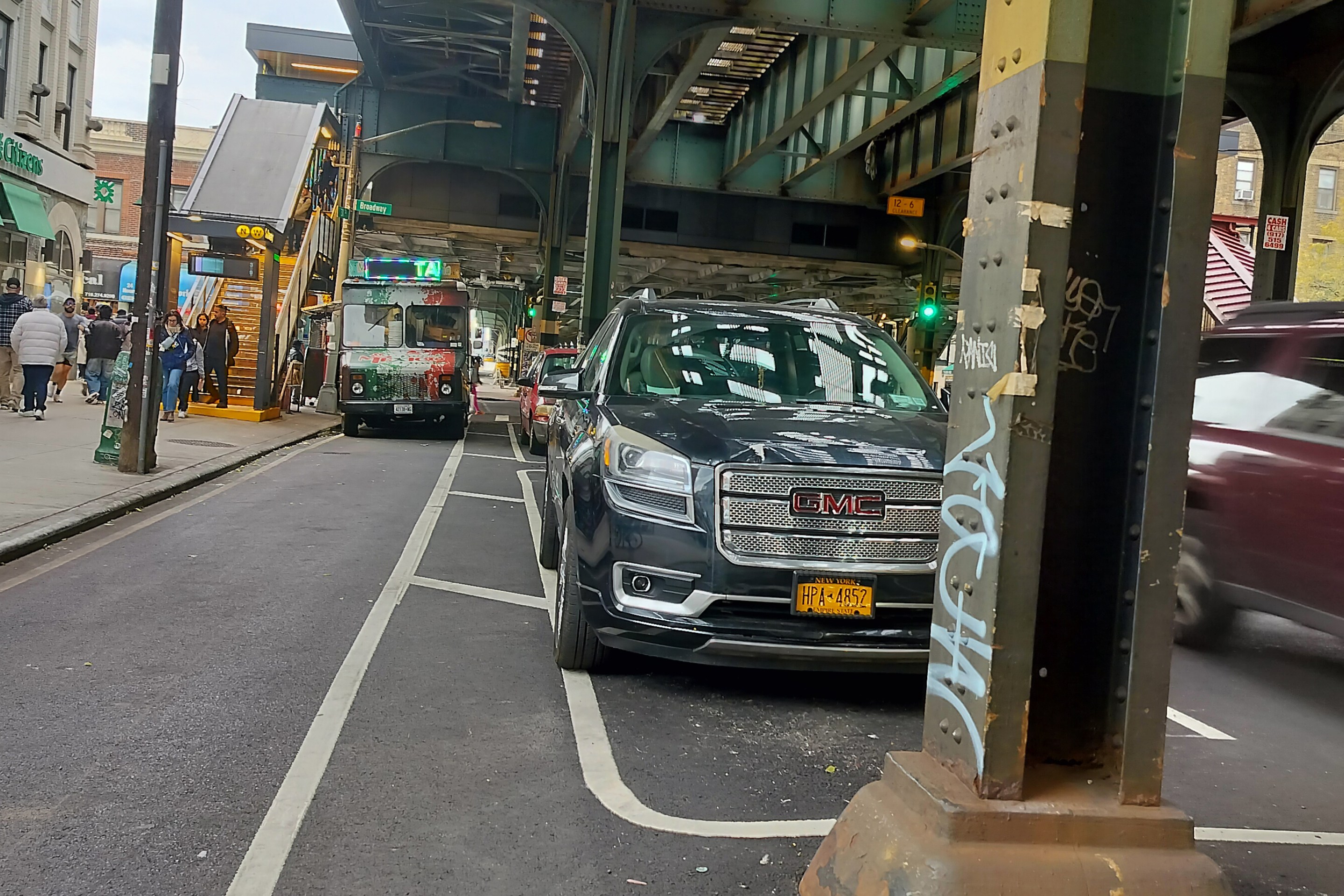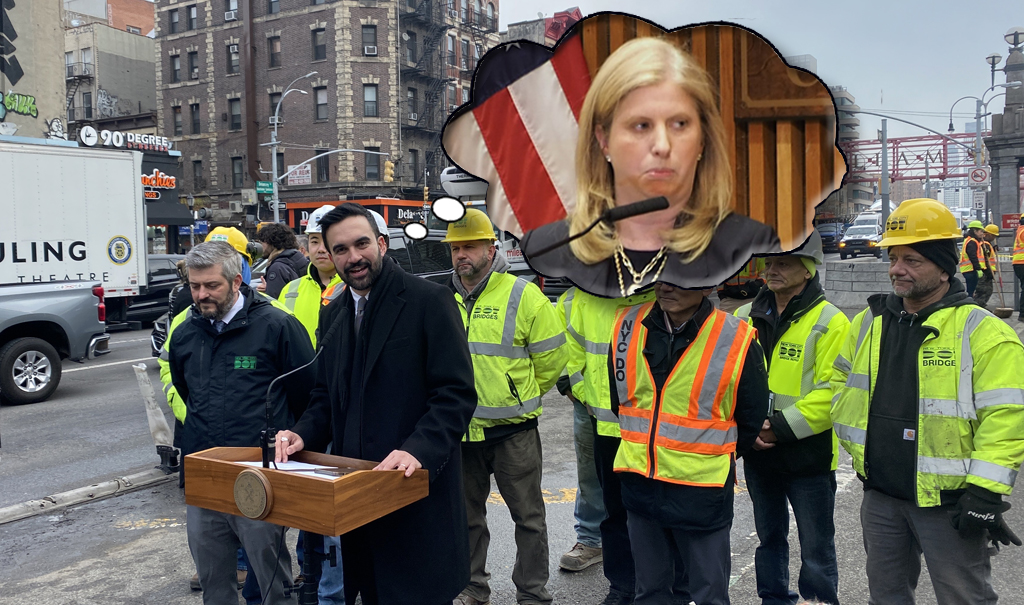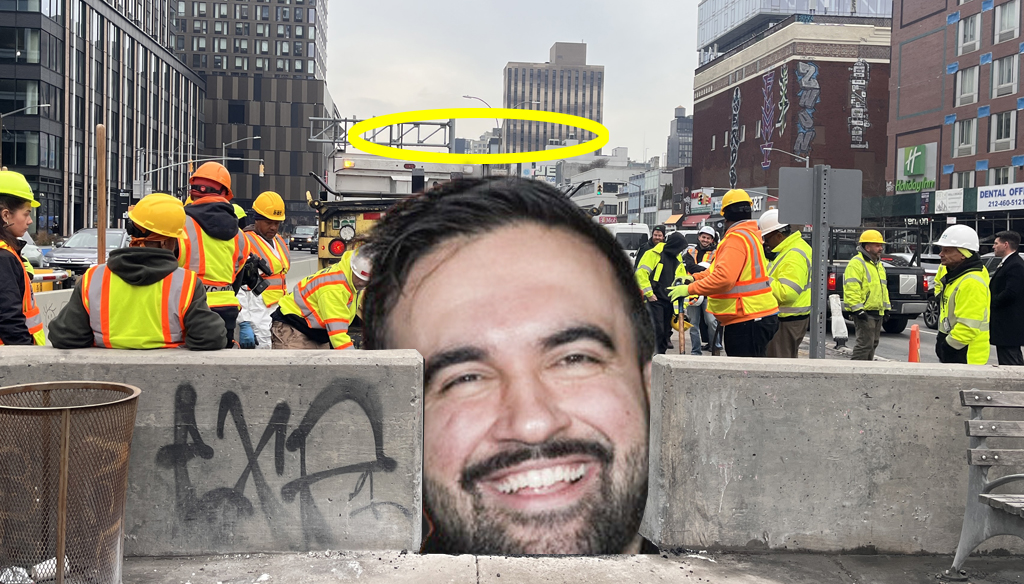Isn't the city awesome without cars?
That, for the millionth time, is the bold message behind a $100-million renovation, expansion and reimagining of Union Square that the area's business improvement district will release today.
It's basically a car-free Union Square.
The Union Square Partnership plan, first reported by the Wall Street Journal on Monday, would create 33 percent more public space by taking back roadways from dangerous automobiles and connecting existing gathering places to other portions of the park and to the Village itself.
“For many New Yorkers, Union Square is the heart of the city,” said Guido Hartray, the founding partner of Marvel, the architecture firm that created the renderings. "Our design preserves the wonderful qualities that draw people to Union Square-14th Street and provides more room for pedestrians by extending the park to adjacent areas and reducing congestion. By finding a way for the park to grow and evolve with the city around it, we are maintaining the balance of the space, ultimately making it more beautiful and enjoyable for everyone."
"Everyone" is a key word when Union Square is involved. The park's very history is intertwined with the notion of public space as essential not just for a game of checkers, but for bold political chess — with Union Square serving as the backdrop for Civil War draft protests, Vietnam-era draft protests and, more recently, protests against police brutality by Black Lives Matter groups.
Will "everyone" truly be welcome in a space created by a business improvement group? The Union Square Partnership promises it.
"Union Square Partnership envisions a future that preserves and enhances the existing platform for community activism while providing improved physical infrastructure ... that will vastly expand the available public space for expressive activity and public gathering," the group says in its vision statement. "Our aim is to strengthen equitable access to the park and the district for an increasingly diverse population of residents, workers, students, and visitors for decades to come.
Let's run through the renderings and then get back to the discussion.
14th Street, looking west from above
Union Square, looking north from 14th Street
The existing Union Square East triangle, looking west
Union Square, approached from Broadway at 17th Street
Union Square West, looking north
Takeaway 1: A city without cars
Most striking in the renderings is just how much can be accomplished when planners fully commit to banishing the automobile from public spaces. The before-and-after renderings of 14th Street make that starkly clear. In the before shot, the car-free busway reveals its flaws — it's not car-free at all, but still devotes roughly half its space for the storage of vehicles.
In the "after" shot, sidewalks are widened to accommodate the hoards of shoppers, diners, park-goers and flaneurs who (well, pre-COVID) flock to Union Square, but are squeezed into limited space by the city's insistence on giving car drivers the abundance of space. The only space for motorized vehicles in this "after" shot is for the buses, which would no doubt run even faster than they do under the current busway configuration.
Also, by eliminating the three-lane stub of Union Square East between 17th and 14th streets, thousands of square feet of public space can be added, connecting the park to the existing underused triangle just to the east. (Expect a lawsuit from the same people who opposed the 14th Street busway.)
To be clear, the Union Square Partnership hasn't fully locked down its car-free plan, only sort-of alluding to it in renderings. In the mission statement, the Partnership says merely that the goal is "to foster a transit-rich, dynamic and inclusive urban space that encourages walking and gathering; to celebrate the diverse communities of New Yorkers and visitors, and to make Union Square the most welcoming and accessible place in New York."
It achieves that by increasing pedestrian and open space, improving connectivity, "promoting free expression and the interweaving of diverse populations as a hallmark, prompting restaurant growth and supporting "environmental and public health in and around Union Square."
Takeaway 2: This ain't cheap
Who's paying for all this gorgeous Manhattan revisioning? Why, largely you are, of course.
The Union Square Partnership promises to put up $2 million to $10 million for design, plus to raise $10 million to $20 million more from private contributions, but the plan would still require $40 million plus of public money to be spent over the 10- to 20-year buildout. But don't worry, the Partnership says; it "has a history of successful capital fundraising for large-scale public realm projects in Union Square."
"Working with our partners and consultants, we will develop a funding strategy that harnesses both public capital funding and private sector investment," the Partnership said in a statement.
Takeaway 3: Why can't we have this kind of public space everywhere?
The proposal brings to mind how rarely similar projects are achieved in neighborhoods without multi-million business improvement districts. Even as Union Square Partnership is unveiling its vision, residents of Jackson Heights and Corona, for example, who don't have a park anywhere near the size of the existing Union Square, let alone Union Square on Steroids, are begging the Department of Transportation to merely allow them to keep their open street on 34th Avenue as car owners demand the space back.
It is unclear if they will win.
Yet halfway across the city, a well-funded business group is making the argument that public space that puts people first will benefit not only those residents, but also their businesses and their transit service. So if it's true in Union Square — and it is, just as it was true in Times Square and just as it will be true along all of Broadway when it is pedestrianized between Columbus Circle and Union Square — it's true everywhere, whether a neighborhood has a business improvement district or not.
Which is something the next mayor should keep in mind.
The Union Square Partnership will share its vision on a Zoom call on Thursday, Jan. 26 at noon. Register here.






